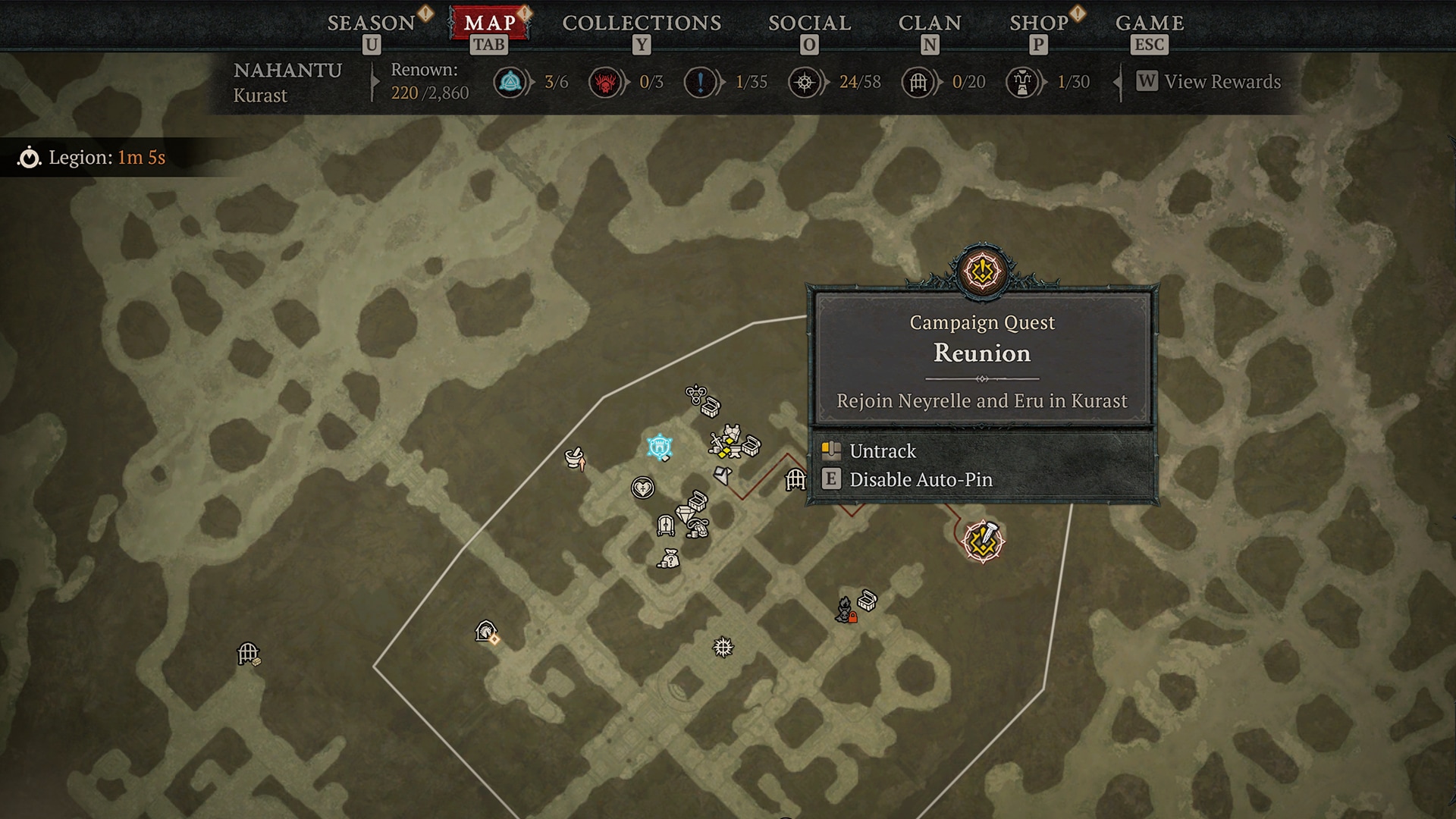A Crucible for All—Accessibility Features in Vessel of Hatred
Accessibility is one of our top priorities in creating Diablo IV. We’ve integrated it into our development process from the very beginning and have worked with the disability community to discuss, iterate, and test features. With a more supportive and customizable gaming experience, these considerations have helped our games reach a legion of new players.
Diablo IV opened an infernal new chapter on October 8 with Vessel of Hatred. In bringing this adventure to life, our team developed new accessibility features designed to support players who have visual disabilities as they traverse the new region of Nahantu. With these updates, players will be better able to find—and fight—their way through the perilous jungle.
The features added to Diablo IV with Vessel of Hatred’s launch ensure that even more players can navigate the grim world of Sanctuary. We’ve rolled out:
- Auto-Pin: A new feature that automatically drops a map pin on the destination of your selected quest or task from your in-game Journal. When a pin is dropped, your mini-map shows a route to follow to get to the chosen destination. A dropped pin becomes the default when selecting quests, and further enables additional navigation features.
- Audio Navigation Assistance: With this feature enabled, the player receives spatial audio pings that direct the player towards their placed pin on the overworld map. This feature, in conjunction with auto-pin navigation, allows players to navigate quest content while tracking their destination through audio navigation. We recommend using headphones for best results of the immersive sound. Players can adjust both the volume and the interval of the ping to find a level that meets their needs.
- Compass: The compass feature enables an on-screen HUD element that circles around the player and points towards their placed in-world pin. In combination with auto-pin, this provides even more guidance for the player. The color of the arrow can be changed to match their needs and ensure it is clearly visible while slaughtering the denizens of hell.
“As developers, we want as many players as possible coming into the game,” says Drew McCrory, lead accessibility designer for Diablo IV. “While we designed this set of features specifically with the blind and low vision community in mind, we’ve found that each release proves the power of accessibility to bring our games to more players. We’re serving people who may be experiencing disabilities alongside new players who might use these features as they learn to navigate the world of Sanctuary.”
Direct feedback from the disability community was essential to shaping these features and outfitting Vessel of Hatred with 3D spatial sound. From the Public Test Realm (PTR), our developers received input on the audio navigation, which led to add three unique audio pings and varying the patterns of the sound to provide multiple pieces of information through audio.
These are the latest to join Diablo IV’s existing suite of accessibility features. You can find more information in our pre-launch blog.
Accessibility work is never done, and the team is continuing the conversations as we forge plans for future seasons. Making a game more accessible also makes it more approachable, and we are eager to welcome more players into the Diablo universe to join the fated campaign against Mephisto.

